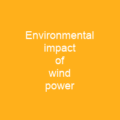Renewable Energy: The Future of Our Planet
Imagine a world where the air is clean, the skies are blue, and our energy sources are sustainable. That’s exactly what renewable energy promises us – a cleaner, greener future.
The Rise of Renewable Energy
Renewable energy comes from natural resources that can be replenished on a human timescale, such as solar, wind, hydropower, bioenergy, and geothermal power. Over the past 30 years, we’ve seen significant advancements in technology and cost reductions for sources like solar and wind power. This has made renewable energy more efficient and cheaper than ever before.
Global Impact
Renewable energy accounted for between 20% to 28% of global electricity supply from 2011 to 2021, with projections suggesting it will reach 42% by 2028. This growth is driven by the urgent need to combat climate change and reduce greenhouse gas emissions.
Challenges and Opportunities
While renewable energy offers a promising solution, its deployment still faces obstacles such as fossil fuel subsidies, lobbying, and environmental damage from mineral extraction. Some non-renewable sources like nuclear power emit little, while some renewables can be carbon-intensive, such as biomass burning without offsetting planting new plants.
Diverse Sources of Renewable Energy
Let’s dive into the different types of renewable energy:
- Solar Power: Harnessing sunlight through photovoltaics (PV) and solar thermal systems. PV is more widespread, accounting for 2/3 of global capacity as of 2022.
- Wind Energy: Modern utility-scale turbines range from 600 kW to 9 MW, meeting nearly 4% of global electricity demand in 2015 and having the potential to meet five times total current global energy production.
- Hydropower: With a high conversion efficiency of about 90%, hydropower is flexible and complements wind and solar power. The world’s renewable hydropower capacity was 1,360 GW in 2021, with only one-third of the world’s estimated hydroelectric potential developed.
- Bioenergy: Derived from biological material like plants or plant-derived materials, bioenergy can be used directly via combustion or converted to a more energy-dense biofuel. Biofuels are primarily used in transportation and provide 3.5% of the world’s transport energy demand.
- Geothermal Energy: Thermal energy extracted from the Earth’s crust, with global capacity being 15 GW in 2022. Enhanced geothermal systems (EGS) use hydraulic fracturing to break apart solid rocks and release trapped heat for harvesting.
The Economic Benefits of Renewable Energy
Renewable energy is not just about saving the planet; it’s also a significant economic opportunity. Solar technology investments doubled from USD 162 billion to USD 308 billion between 2020 and 2022, with China and the United States receiving most of these investments.
Job Creation
The global transition to 100% renewable energy is feasible and economically viable. Investment in renewables creates more jobs than fossil fuels, with 12 million people employed worldwide as of 2020. China accounted for almost half of the global increase in renewable electricity in 2021, adding 3,146 gigawatts globally.
Emerging Technologies
As we look to the future, emerging technologies like enhanced geothermal systems, concentrated solar power, cellulosic ethanol, and marine energy are being developed. These innovations hold promise for a more sustainable and efficient renewable energy landscape.
Conclusion
The transition to renewable energy is not just about reducing carbon emissions; it’s about creating a cleaner, healthier planet for future generations. As we continue to invest in these technologies, let us remember the importance of building them sustainably and responsibly. The path to a greener future starts with each one of us.
You want to know more about Renewable energy?
This page is based on the article Renewable energy published in Wikipedia (retrieved on November 24, 2024) and was automatically summarized using artificial intelligence.








